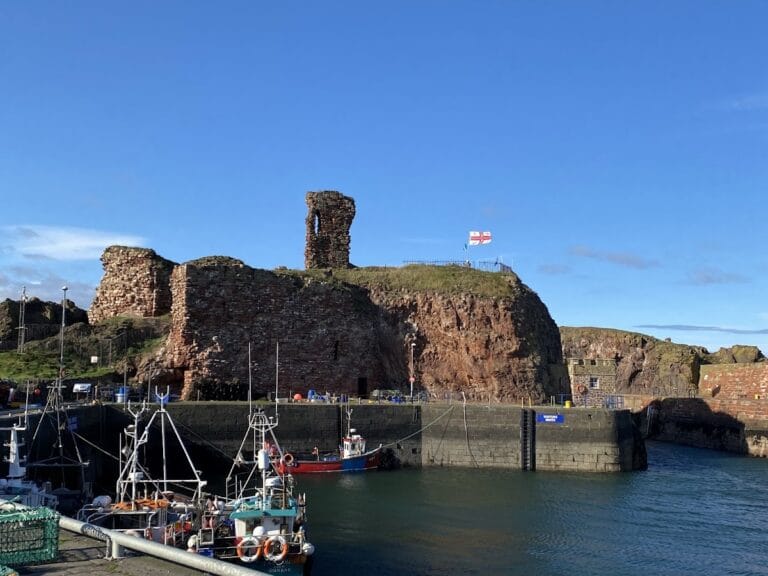Yester Castle: A Medieval Stronghold in Scotland
Visitor Information
Google Rating: 4.7
Popularity: Low
Google Maps: View on Google Maps
Country: United Kingdom
Civilization: Unclassified
Remains: Military
History
Yester Castle is situated in the parish of Gifford in Scotland. It was established by Norman settlers during the medieval period, marking the influence of Norman culture and governance in the region. The site’s origins lay in a barony granted by King William the Lion to Hugo de Giffard, a Norman immigrant, amid the reign of King David I. This connection anchors the castle’s foundation securely in Scotland’s early medieval nobility.
The castle’s earliest significant construction phase culminated before 1267, with the erection of a stone keep thought to have been built by Sir Hugo de Giffard himself. This figure gained notable reputation for his reputed magical abilities and for serving as guardian to the young King Alexander III of Scotland. Historical records indicate that Alexander III visited the castle around May 24, 1278, and engaged in correspondence with Edward I of England while present there, suggesting its role as a site of royal importance during this period.
Following the turbulent Wars of Scottish Independence, Yester Castle underwent reconstruction in the style of a defensive enclosure or castle of enceinte, reflecting evolving military architecture and needs. The death of the last male member of the Giffard family in 1357 led to the transfer of the barony to the Hay family through marriage, who maintained possession of the estate thereafter. The castle’s military significance continued into the 16th century. It suffered burning by English forces in 1544 during the Rough Wooing—a series of conflicts aimed at securing a dynastic marriage between Scotland and England. A few years later, in 1547, John, 4th Lord Hay, successfully defended the castle, though the English managed to seize it in 1548. After these events, William Hay chose to abandon the old stronghold in favor of building a new tower house on the present-day Yester House site.
By the end of the 17th century, Yester Castle had fallen into significant ruin. Much of its stone was removed for reuse in other constructions. Despite the decay, the subterranean chamber known as the Goblin Ha’ (or Hobgoblin Ha’) remained occupied until as late as 1737. Beyond its documented history, the castle is steeped in legend. Sir Hugo de Giffard, remembered locally as the “Wizard of Yester,” was believed to have practiced sorcery and necromancy. Traditions claim that the mysterious underground hall was built through magical means by hobgoblin helpers, blending folklore with history at this ancient site.
Remains
The surviving remains of Yester Castle present a glimpse into its medieval layout and fortification style centered around a strong defensive design. The castle once featured protective curtain walls forming an enclosure, tailored for defense during periods of conflict. Today, parts of the northern curtain wall still stand, though much of the castle’s stonework was removed in the early 1600s to supply material for a newer tower house constructed nearby. The castle ruin has since become overgrown, hinting at its age and the natural reclamation of the site over centuries.
The most remarkable and intact portion of Yester Castle is the Goblin Ha’, a large vaulted chamber set underground beneath the site. This chamber, sometimes called the Hobgoblin Ha’ or Bo’ Hall, is accessible through a staircase on the west side of the castle grounds. Its Gothic-style vaulting demonstrates medieval masonry skills and suggests a substantial subterranean space, possibly used for storage or refuge. The Goblin Ha’ extends beneath a considerable part of the castle footprint and features architectural details such as window-like openings that illuminate the interior. This room’s elaborate vaulted ceiling remains a notable feature, standing in contrast to the ruinous condition of above-ground structures.
Despite the widespread dismantling of above-ground walls, the Goblin Ha’ survived in situ and was still occupied until the mid-18th century, indicating its continued utility or symbolic importance long after the castle’s active use ended. Local traditions link this vaulted chamber to the legendary magical prowess of Sir Hugo de Giffard, with folklore crediting supernatural beings for its construction. Today, the site holds legal protection as a Scheduled Ancient Monument, preserving its remains for historical care, though it lies on private property. The Goblin Ha’ remains the defining architectural element representing Yester Castle’s medieval heritage.










